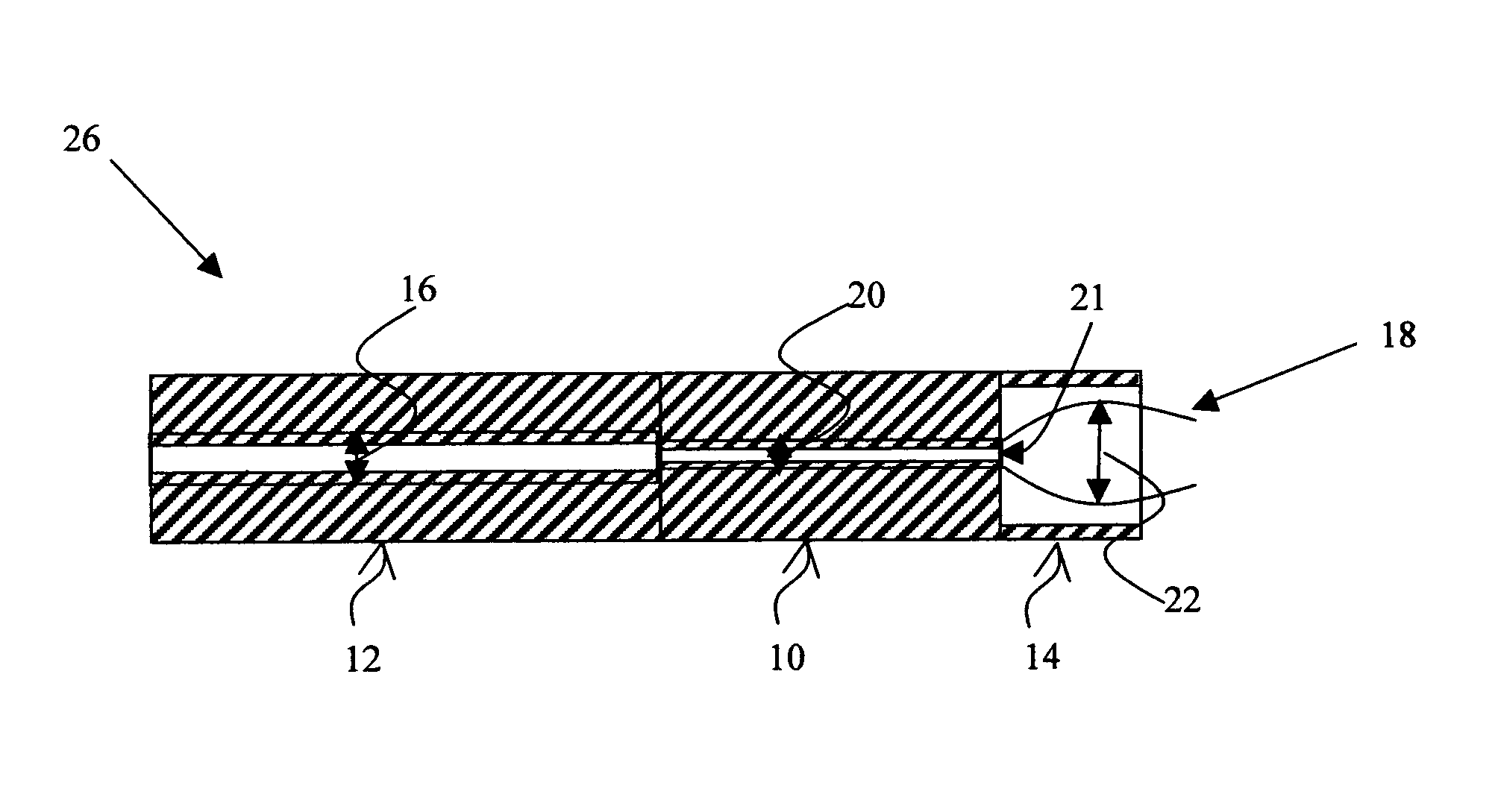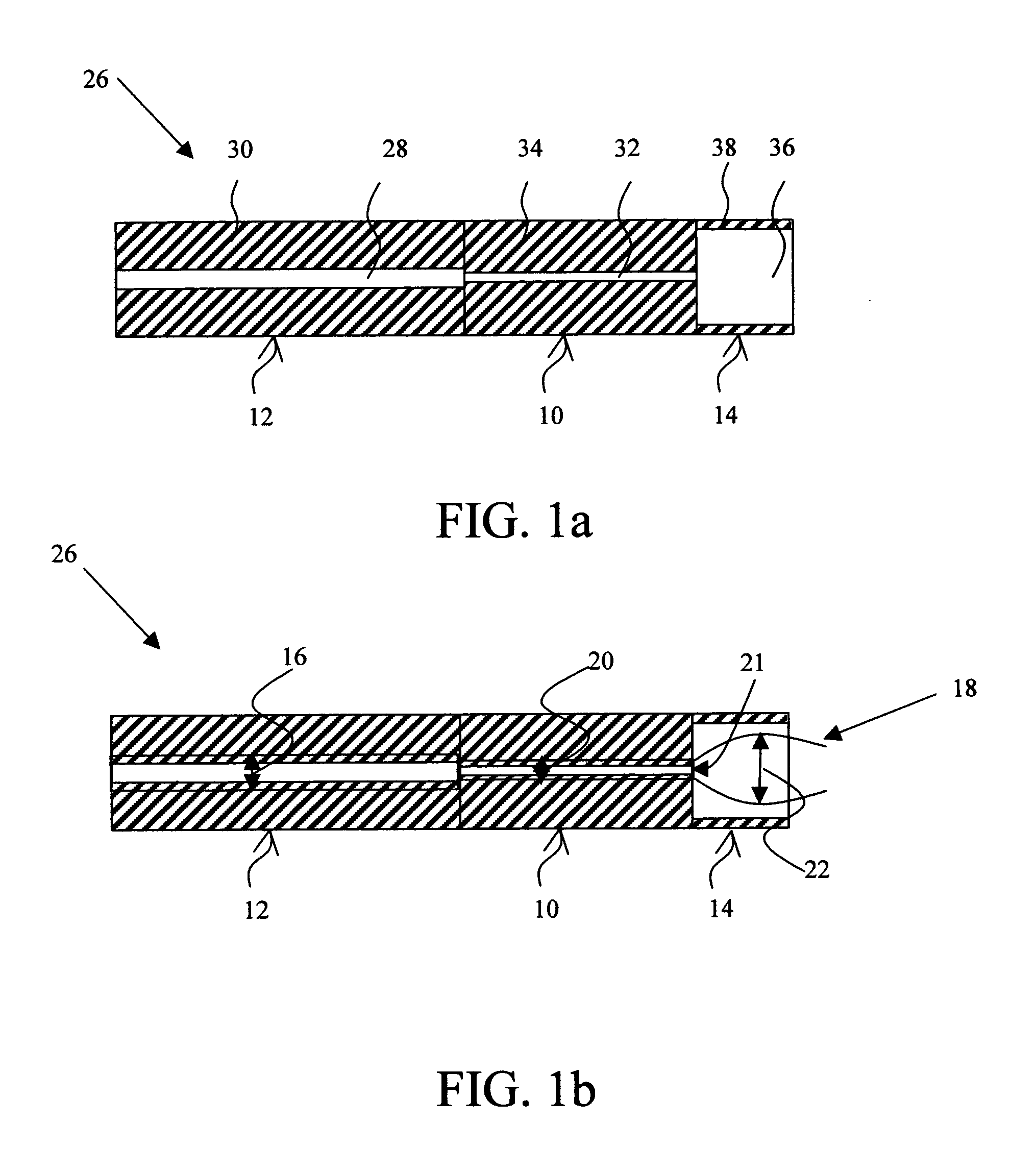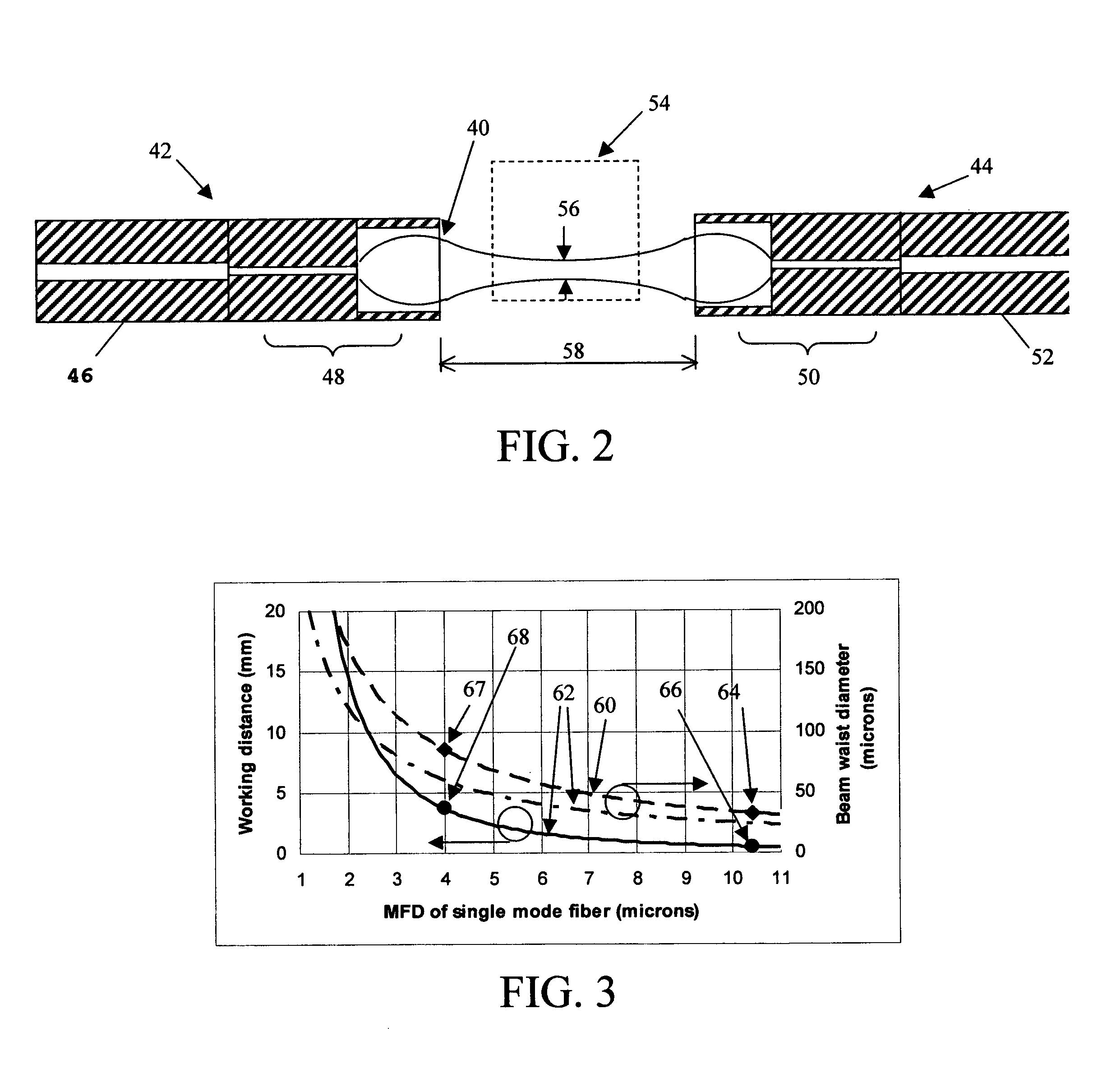Fiber collimating lenses and method
a fiber and collimating lens technology, applied in the field of optical fiber collimating lenses, can solve the problems of affecting reliability, complicated packaging, toxic and expensive, etc., and achieve the effect of long working distance and large beam diameter
- Summary
- Abstract
- Description
- Claims
- Application Information
AI Technical Summary
Benefits of technology
Problems solved by technology
Method used
Image
Examples
embodiment 1
[0042]The specialty single mode fiber 10 (4 μm MFD at 1550 nm) is sandwiched between the input single mode fiber 12 (SMF-28 with MFD 10.4 μm at 1550 nm) and the graded index multimode fiber lens 14 (62.5 / 125). The quarter pitch length, beam waist, and maximum working distance are given in Table 1.
[0043]
TABLE 1ParametersEmbodiment 1ControlQuarter pitch length (μm)266266Beam waist diameter at5621.6quarter pitch length (μm)Maximum working distance (mm)1.780.18Beam waist diameter at maximum4017working distance (μm)
[0044]The specialty single mode fiber 10 (3.3 μm MFD at 1310 nm) is sandwiched between the input single mode fiber 12 (SMF-28 with MFD 9.2 μm at 1310 nm) and the graded index multimode fiber lens 14 (62.5 / 125). The quarter pitch length, beam waist, and maximum working distance are given in Table 2.
[0045]
TABLE 2ParametersEmbodiment 1ControlQuarter pitch length (μm)266266Beam waist diameter at57.420.6quarter pitch length (μm)Maximum working distance (mm)1.970.204Beam waist diame...
embodiment 2
[0046]A specialty single mode fiber 80 (4 μm MFD at 1550 nm) is sandwiched between a single mode input fiber 82 (SMF-28 with MFD 10.4 μm at 1550 nm) and a graded index multimode fiber lens 84 (100 / 140). As shown in FIG. 5 the outer diameter of the lens fiber 84 is a little bigger than the 125 μm standard diameter of the SMF fiber. The quarter pitch length, beam waist, and maximum working distance are given in Table 3.
[0047]
TABLE 3ParametersEmbodiment 1ControlQuarter pitch length (μm)404404Beam waist diameter at8632.8quarter pitch length (μm)Maximum working distance (mm)3.660.488Beam waist diameter at maximum60.624.4working distance (μm)
[0048]The specialty single mode fiber 80 (3.3 μm MFD at 1310 nm) is sandwiched between single mode input fiber 82 (SMF-28 with MFD 9.2 μm at 1310 nm) and graded index multimode fiber lens 84 (100 / 140). The quarter pitch length, beam waist, and maximum working distance are given in Table 4.
[0049]
TABLE 4ParametersEmbodiment 1ControlQuarter pitch length ...
embodiment 3
[0050]To further increase the working distance of the fiber collimating lens 26, the distal end of the GRIN fiber 14 can be formed with a convex surface 90 as shown in FIG. 6a. The convex surface can be formed by heat melting based on electric discharge, or chemical etching.
[0051]Alternately, a coreless fiber 92 having a uniform refractive index can be fused to the distal end of the GRIN fiber 14. The distal end of the coreless fiber is melted to form a hemispherical surface 94 by heating based on electric discharge, or chemical etching, as shown in FIG. 6b.
PUM
 Login to View More
Login to View More Abstract
Description
Claims
Application Information
 Login to View More
Login to View More - R&D
- Intellectual Property
- Life Sciences
- Materials
- Tech Scout
- Unparalleled Data Quality
- Higher Quality Content
- 60% Fewer Hallucinations
Browse by: Latest US Patents, China's latest patents, Technical Efficacy Thesaurus, Application Domain, Technology Topic, Popular Technical Reports.
© 2025 PatSnap. All rights reserved.Legal|Privacy policy|Modern Slavery Act Transparency Statement|Sitemap|About US| Contact US: help@patsnap.com



